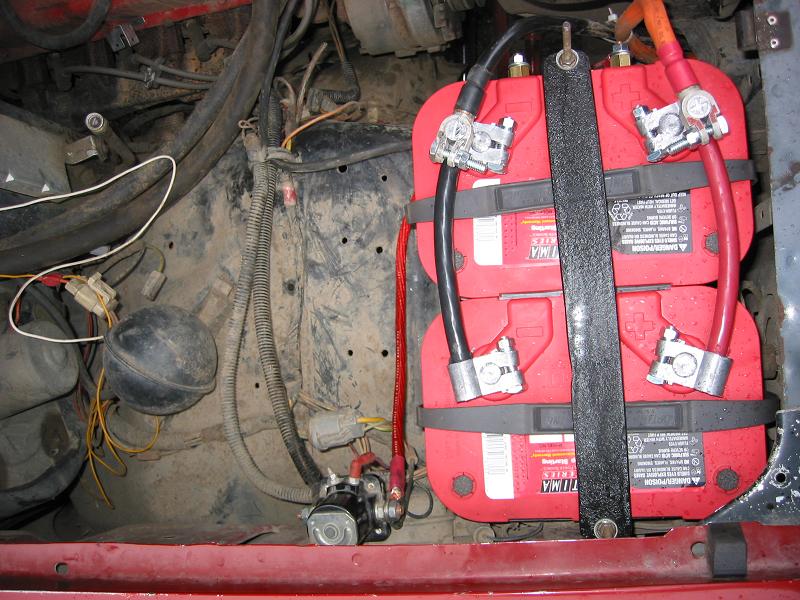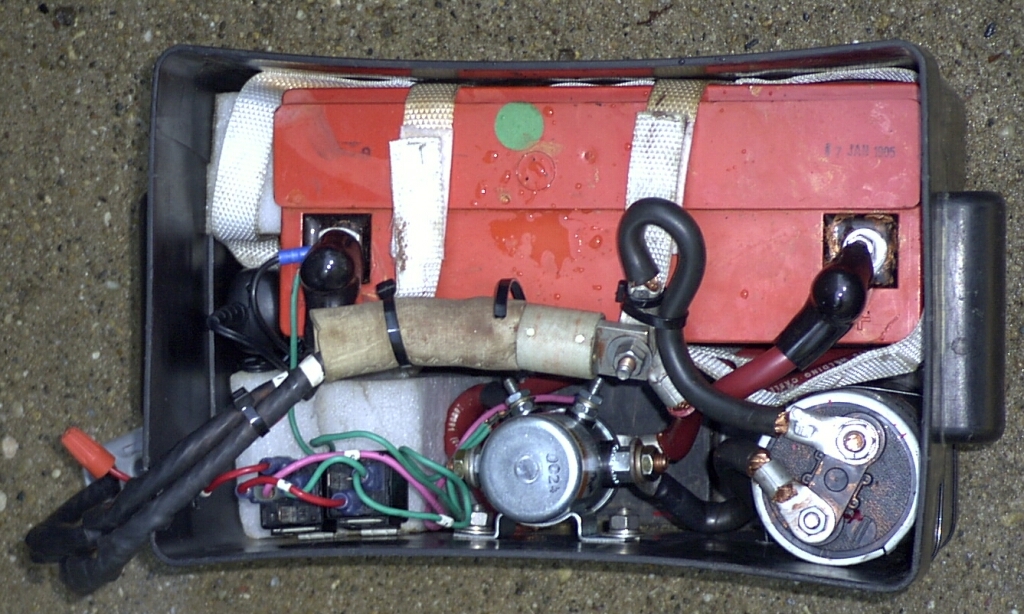Originally Posted By: JHZR2
Originally Posted By: SOHCman
[img:left]
https://forum.ih8mud.com/attachments/20170506_123245-jpg.1455415/[/img]
The above example seems a bit complex, it looks like they even have several fuse-able links built into the positive side connections, is that even necessary?
Your recommendation for pass through connectors is probably closer to this image below, just nice and simple with short runs of heavy guage wire and no battery isolation. The down side I guess is both batteries can be killed at once with no isolator, where as with one you would still be able to start the engine after killing the winch battery. Also when the engine isn't running, if one battery gets weak, it can drag the other battery down. I could be wrong, just something I read.
I'm going to hook it up with the single battery for the time being just to get a benchmark for how it works like that, and that will give me time to source the wire and terminals.
As far as the winch ground, it grounds through the factory 2 AWG harness directly to the battery. I could build bigger wires of corse, but not with the factory quick disconnect since it is sized for the 2 AWG.
Thanks for the help! I really do appreciate it.
SOHC
You need to think about protection of the cables, that's what fusing is all about.
Some battery designs fuse positive and negative. Fusing of positive at minimum on a vehicle is prudent, if possible. Batteries can release massive fault current, like thousands of amps. Car manufacturers don't always protect the cables as close to the source (battery) as possible.
For the picture you showed, a fuse woukd optimally be as close to the battery, on the long run of cable, as possible. For such short jumpers between batteries, I see no reason to fuse that. Now if your heavy cable jumpers to parallel batteries was a long run with chance for pinching, chafing, etc., you'd consider fusing.
I am planning on using a "tinyfuse" on the positive feed wire (1/0 AWG) that is just over the alternator output and probably mount it directly to the battery post terminal. In my case, I actually only have the 95 amp alternator instead of the 130, so I am considering upgrading right to a 200 amp powermaster alternator. I would prefer to use maybe a 225 amp tinyfuse but right now all I am finding are 250 amp. Is that too high over?



